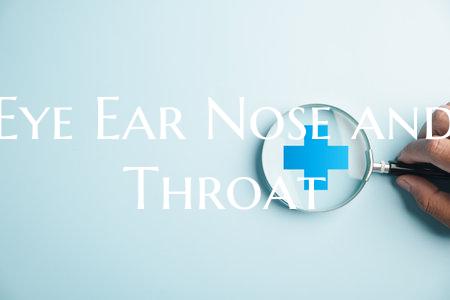
Eye Ear Nose and Throat
The human sensory system is a marvel of complexity, with each organ playing a unique role in our interaction with the world around us. The eye, ear, nose, and throat are integral components of this system, each serving crucial functions that contribute to our overall well-being.
The eye, often referred to as the "window to the soul," is responsible for our sense of vision. Its intricate structure allows us to perceive light and color, shapes and movement, and plays a vital role in our spatial awareness. The eye also enables us to express emotions through visual cues, making it an essential tool for communication.
On the other hand, the ear is the gateway to our sense of hearing and balance. Its delicate mechanisms pick up sound waves, convert them into electrical signals, and transmit them to the brain for interpretation. In addition to hearing, the ear plays a key role in helping us maintain our equilibrium and spatial orientation, allowing us to navigate our surroundings effectively.
The nose serves as our olfactory organ, responsible for our sense of smell. It detects various odors in the environment and sends signals to the brain, triggering memories, emotions, and even influencing our appetite and well-being. The nose also acts as a primary defense against harmful pathogens, filtering out particles and microbes before they can enter our respiratory system.
Last but not least, the throat is a common pathway for both the respiratory and digestive systems. It plays a crucial role in our ability to breathe, swallow, and speak. The throat houses the vocal cords, enabling us to produce spoken language and communicate with others. It also serves as a passageway for air and food, ensuring that vital nutrients reach our body while waste products are expelled.
Despite each organ having its unique functions, the eye, ear, nose, and throat are interconnected in various ways. For example, the throat and nose are connected through the nasopharynx, allowing for coordinated actions during breathing and swallowing. Similarly, the ear and throat are linked by the Eustachian tube, which helps equalize pressure and drain fluids between the middle ear and throat.
Understanding the intricate relationships between the eye, ear, nose, and throat is essential for maintaining good sensory health and overall well-being. Regular check-ups, proper hygiene practices, and prompt medical attention can help preserve the proper function of these organs and ensure a seamless sensory experience in our daily lives. The eye, ear, nose, and throat truly work together as a harmonious system, allowing us to perceive, interpret, and interact with the world in meaningful ways.